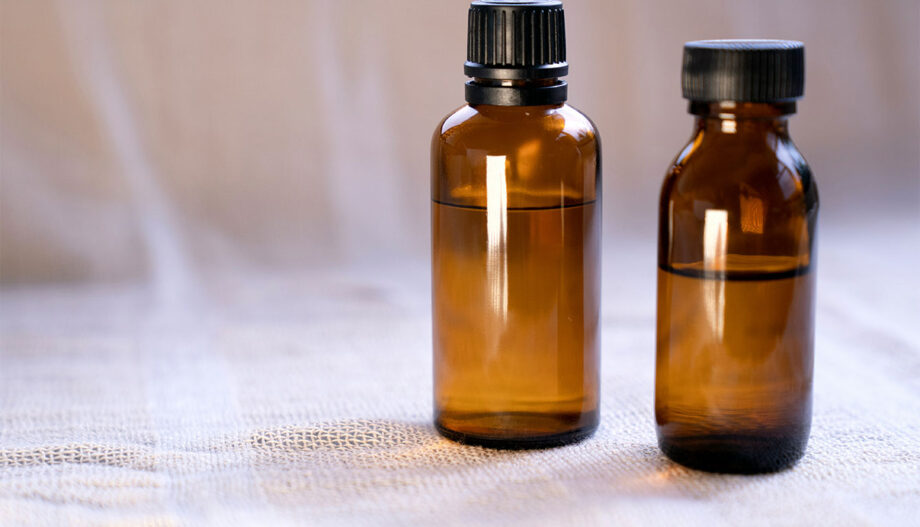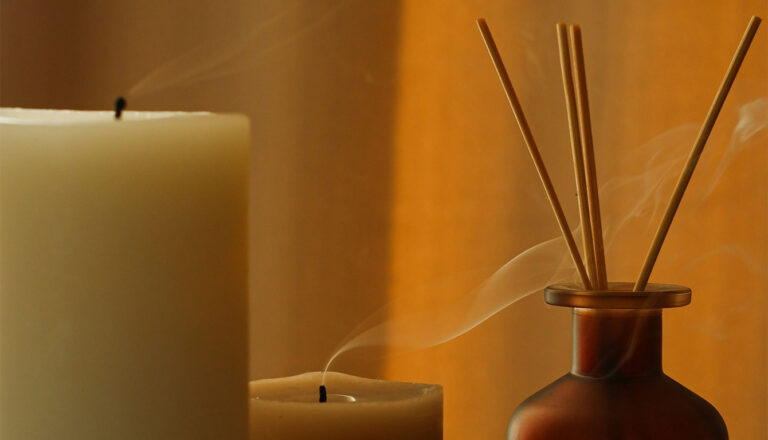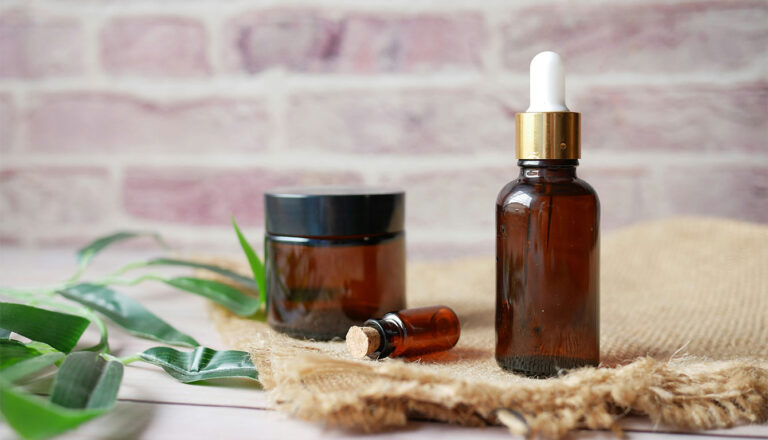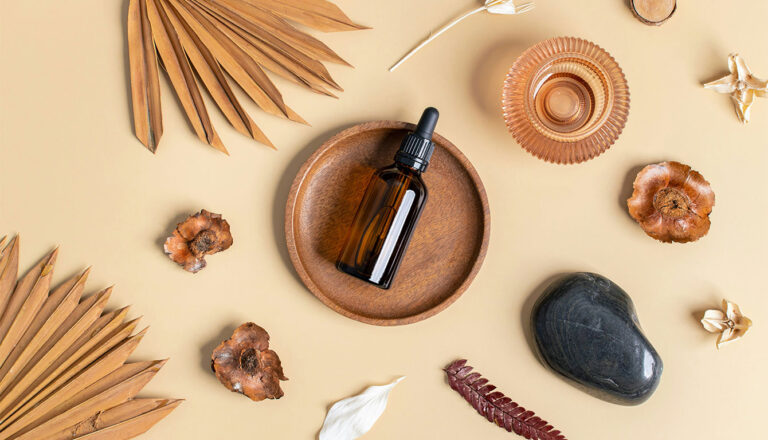Curious about how scented oil and a soothing touch can support your mind and body? This friendly guide gives an easy starting point for anyone who wants an evidence-informed overview of aromatherapy massage and its place in wellness.
We explain how aromatic essential oils and skilled hands combine to promote relaxation, ease stress and lift mood. You will see how a session differs from a regular massage, from techniques and pressure styles to bespoke carrier blends selected by therapists.
Kama Calm Holistic Therapies in Edinburgh is known for providing deeply restorative treatments that combine traditional massage techniques with holistic and Ayurvedic approaches. The practice focuses on natural healing, relaxation, and overall wellbeing, offering clients a calming experience tailored to their needs.
Pricing is simple and transparent:
90 minutes – £120 | 60 minutes – £85
Key Takeaways
- Simple, holistic approach that uses scent and oil to support relaxation and health.
- Clear differences from standard massage include customised blends and techniques.
- Spa & Massage London rated 4.8/5 with UK-made, toxin-free blends.
- Transparent pricing: 30/60/90/120 minutes listed for easy planning.
- Guide will explain safety, who should take care, and practical booking tips.
What is aromatherapy massage treatment?
Skilful hands and tailored botanical blends work together to soothe muscles and support emotional balance.
Simple definition and how it differs
In plain terms, this session pairs light, flowing strokes with concentrated plant extracts. Therapists choose blends such as lavender, eucalyptus or chamomile to suit calming, uplifting or clearing goals.
The difference from a standard session lies in the added scent and topical blends. The chosen fragrances influence mood while touch addresses tension. Together they create a more holistic experience than muscle work alone.
How it’s applied
Essential oils are concentrated plant extracts. Practitioners dilute them into a carrier oil to protect the skin and ensure smooth glide.
Clients inhale the aroma as the skin absorbs the diluted blend. This two-fold route helps the session feel deeper and more enveloping.
- Consultation covers preferences, pressure and sensitivities.
- Pressure tends to be lighter, often Swedish-inspired, for relaxation rather than deep tissue work.
- Qualified therapists blend oils thoughtfully to enhance comfort and outcomes.
For a professional option, consider the aromatherapy massage at Kama Calm, where bespoke blends and experienced therapists guide each visit.
How aromatherapy works: from your nose to the brain’s limbic system
Scent molecules travel quickly from the nose to brain regions that shape mood, memory and stress responses.
Olfactory pathway and emotional centres
When essential oils are inhaled, tiny molecules stimulate olfactory receptors in the nasal cavity. Signals travel via the olfactory nerve to the hypothalamus and the limbic system, the brain area most linked to emotion and memory.
The limbic system helps explain why certain scents calm, uplift or sharpen focus. Memories anchored to smell can reappear fast, and that immediate link underpins many reported effects.

Inhalation plus skin absorption: a combined effect
Breathing in fragrance affects the nervous system quickly. At the same time, diluted oils applied topically absorb through the skin and add local and systemic benefits.
- Olfactory signals can alter hormone release via the hypothalamus, affecting mood, sleep and digestion.
- Topical absorption supports circulation and local comfort while the scent soothes the mind.
- Lighter, flowing strokes even out oil distribution and help aroma reach the senses consistently.
“Researchers continue to study mechanisms and outcomes to refine our understanding of these effects.”
Choose oils carefully and dilute them correctly. Good selection and safe mixing matter for pleasant, effective results. Room ambience and scent preference also shape the overall experience, so pick fragrances that match your goal — calm for evening or clarity for daytime.
Core benefits of aromatherapy massage for mind and body
Clients frequently say gentle scented bodywork eases tension and lifts low mood.
Stress, anxiety and mood support
Many people report reduced stress and lower anxiety after a session. Short, flowing strokes and carefully chosen essential oils help the nervous system downshift. This often leads to a clearer, more balanced mood.
Sleep quality and relaxation levels
A late-evening session can ease the transition to rest. By lowering pre-bedtime stress and promoting relaxation, clients commonly notice improved sleep duration and depth.
Pain, muscle tension and circulation
Gentle Swedish-style techniques boost circulation and lymphatic drainage. This eases muscle tightness and supports perceived pain relief as the body moves out of a heightened stress state.
- Headline benefits: calmer mind, steadier mood, less physical discomfort.
- Targeted effects: reduced muscle tension, better circulation, deeper relaxation response.
- Oil choices: lavender for calm, citrus for uplift—selection tailors outcomes.
“Studies cited by professional bodies note improvements in well‑being and reduced anxiety in supportive care.”
| Benefit | Typical outcome | Example oils | Practical tip |
|---|---|---|---|
| Stress & anxiety | Reduced tension, calmer breathing | Lavender, chamomile | Book evening or quiet slot |
| Sleep & relaxation | Longer, more restful sleep | Lavender, ylang-ylang | Allow 30–60 mins post‑session to unwind |
| Pain & circulation | Less tightness, improved flow | Rosemary, eucalyptus | Stay hydrated and rest |
Note: Results vary by oil selection, therapist approach and individual sensitivity. Regular sessions and simple aftercare — drink water, rest — often extend positive effects.
Essential oils commonly used in aromatherapy massage
The right blend can gently nudge breathing, mood and bodily ease toward a chosen aim.
Calming favourites
Lavender supports relaxation and sleep. It pairs well with chamomile, which soothes nerves, and ylang-ylang, which settles the mood.
Uplifting choices
Citrus notes and bergamot brighten mood and lift energy. Rosemary adds an invigorating, clarifying edge for mental focus.
Clearing and cooling picks
Eucalyptus opens the airways and refreshes the senses. Peppermint cools and energises, easing feelings of heaviness.
- Quality matters: Spa & Massage use high‑grade, UK-made, organic, toxin‑free products for truer aroma and gentler skin tolerance.
- Blends are diluted in carrier oil for safe skin application; therapists can adjust ratios to suit sensitivity.
- Example blend: lavender with a touch of citrus gives calm without drowsiness.
- Discuss preferences and do a patch check; some oils may not suit everyone.
- Seasonal needs—congestion or heat—can steer the choice toward clearing or cooling components.
| Category | Typical use | Example oils | Practical note |
|---|---|---|---|
| Calming | Relaxation, sleep support | Lavender, chamomile, ylang-ylang | Best for evening or rest-focused sessions |
| Uplifting | Brighten mood, sharpen focus | Citrus, bergamot, rosemary | Good for daytime appointments |
| Clearing / Cooling | Refresh, ease heaviness, open airways | Eucalyptus, peppermint | Choose during colds or hot weather |
Carrier oils: what they are and why they matter for your skin
A good carrier delivers glide, helps absorption and keeps skin comfortable when fragrant extracts are applied.
Carrier oils are plant-based bases that dilute potent essential oils for safe skin use. They protect the skin while making blends pleasant to apply.
Popular carriers: sweet almond, grapeseed, coconut and rosehip
Sweet almond feels silky and suits most skin types. Grapeseed is light and absorbs quickly for a non-greasy finish.
Coconut offers a richer, nourishing after-feel, while rosehip brings antioxidants and essential fatty acids for skin support.
- Benefits: many carriers contain antioxidants and fatty acids that aid barrier function and softness.
- Therapist choice: carriers are chosen to match preference—lighter versus richer texture—and any sensitivities.
- Safety: proper dilution is essential to comfort and health; mention nut allergies so an alternative can be used.
“The right carrier enhances glide, scent projection and the overall sensory feel, shaping how long aromas linger.”
| Carrier | Texture & absorption | Skin benefits | Best for |
|---|---|---|---|
| Sweet almond | Silky, medium absorb | Moisturising, gentle | Normal to dry skin |
| Grapeseed | Light, fast absorb | Non-greasy, antioxidant | Oily or sensitive skin |
| Coconut | Richer, slower absorb | Nourishing, emollient | Dry, mature skin |
| Rosehip | Light to medium | High in essential fatty acids | Repair and glow-focused care |
Quality carrier products reduce irritation and help maintain skin balance. The choice also affects how an essential oil blend smells and how long the scent stays on the skin.
Aromatherapy massage techniques and pressure styles
Skilful touch and scent work together to shape pace and depth.
Gentle, flowing routines
Long, flowing strokes are the hallmark techniques. They spread aromatic oil evenly and invite progressive relaxation.
Lighter pressure helps the nervous system downshift from stress to calm. Therapists may add gentle kneading or rhythmic moves to soften tight spots without discomfort.
Tailoring strokes to goals
Routines and blends are adjusted to match desired outcomes. For relax, slower deeper-flow strokes encourage surrender. For uplift, brisker, lighter movements and brighter scents prompt alertness.
- Communicate preferred pressure and focus areas so the therapist can adapt techniques.
- Oil viscosity and scent profile influence tempo and stroke style for an integrated feel.
- Not as deep as sports work, yet effective for everyday tension and improved circulation.
Try different session types and lengths to discover the best fit. Consistent techniques and careful blending give a dependable, soothing experience.
What to expect in a professional aromatherapy massage session
Your visit starts with a friendly check-in to record goals, allergies and ideal pressure so the session fits you.
Consultation, bespoke oil blending and patch considerations
Therapists begin with a short consultation. They note any sensitivities, medicines and areas to focus on. This helps create a bespoke blend using essential oils at safe dilutions.
Patch checks are common. A small application confirms skin compatibility and comfort before the main session.
Room ambience, diffuser use and heated massage tables
Treatment rooms are softly lit with subtle music. A Japanese diffuser may gently infuse scent while a heated table helps muscles relax before hands-on work.
These touches set a calm tone that supports a relaxed mind and body throughout the session.
Aftercare: hydration, rest and prolonging the benefits
Afterwards, clients are offered water or herbal tea and advised to hydrate and avoid rushing back into busy tasks.
- Slow, even strokes spread the oil and prepare focused work on tension spots.
- Plan sessions later in the day if improved sleep is a priority; lavender blends often help clients drift off.
- Try a warm bath that evening to extend the relaxed state.
“Ask questions at any point—your comfort guides the pace and focus.”
Safety, sensitivities and when to seek advice
Good practice starts with careful dilution, open discussion and a simple patch check before full use.
Correct dilution and a small patch test reduce the chance of skin irritation or feeling overwhelmed. Avoid applying essential oils to broken skin and follow any dermatology guidance you have.
People with ongoing medical conditions should consult their GP or specialist. This guidance covers allergies, recent procedures and treatments. Aromatherapy is complementary and not a replacement for care for anxiety or depression.
- Tell your therapist about medicines and sensitivities so blends match your health needs.
- Ask for fragrance-light options; scent levels can be reduced for comfort.
- Be cautious in sensitive life stages and when the respiratory system feels reactive.
Evidence from a few studies supports short-term relief for anxiety in specific settings, though results vary by condition. Keep communication open and choose safety-first practices so the session stays supportive and secure.
“Safety-first practices ensure relaxation feels secure and supportive.”
Who may benefit most—and who should be cautious
A calm, tailored session can suit people who want gentle support for tired minds and tight muscles.
Often helped: people managing day-to-day stress, short bouts of anxiety, low mood, poor sleep or stiffness from long hours seated.
It can also support those seeking comfort alongside other health approaches, not as a replacement for medical care.
Use caution: anyone with fragrance sensitivities, reactive skin, complex medical conditions or interacting medicines should check with a clinician first.
- Start with shorter slots and milder blends if you are new or unsure about reactions.
- Be open about goals and concerns so the therapist can adapt oils, pressure and scent level.
- Light scent options and hypoallergenic carriers can suit sensitive skin and reduce irritation risk.
“A calm, steady approach helps people in a high‑anxiety state feel safe and grounded.”
| Group | Likely benefit | Precaution |
|---|---|---|
| People with stress or low mood | Relaxation, uplifted mood | Prefer evening or gentle blends |
| Those with sleep troubles | Improved rest after sessions | Allow unwind time post-session |
| Sensitive skin or fragrance‑reactive people | May still enjoy careful options | Patch test and hypoallergenic carriers |
Final note: personalised choice of essential oils, pressure and session length improves comfort and outcomes. When in doubt, seek professional advice about your health and specific conditions.
At home or in a spa? Choosing the right setting for aromatherapy
Spa visits deliver trained hands and bespoke blends; home rituals let you top up benefits between appointments. Choose a spa for professional blending, expert technique and a calm ambience. Choose home for convenience and daily support that fits busy life.
Diffusers, self-massage and best practice for home use
A simple diffuser can scent a room while you work or unwind, but short sessions work best. Run a diffuser for 20–30 minutes in a well‑ventilated space to avoid overwhelming the senses.
For self-care, dilute essential oil carefully. Start with 1–2 drops per 10ml carrier oil for hands or shoulders. Patch-test new blends and build slowly.
- Compare settings: spas offer blends, technique and ambience; home gives ongoing support and flexibility.
- Basic routine: a two‑minute shoulder sweep or a hand sequence can reset the mind during a busy day.
- Practical tips: keep small amounts of oil, rotate types and breathe mindfully while the diffuser runs.
“Home rituals complement professional sessions and help maintain calm between visits.”
Aromatherapy massage in London: clinics, convenience and hours
A city-wide network of clinics helps people fit a soothing session around work and family life.
Spa & Massage operates seven London branches, each offering the same calm ambience, skilled therapists and high-quality products. Locations span North, West, Central and South West so you can pick the nearest spot.
- Crouch End — 38 The Broadway, N8
- Bayswater — 123 Queensway, W2
- Chiswick — 46 Turnham Green Terrace, W4
- Earl’s Court — 125 Earl’s Court Road, SW5
- Belsize Park — 173 Haverstock Hill, NW3
- Richmond — 1A Brewers Lane, TW9
- Fulham — 709 Fulham Road, SW6
All branches are open seven days a week, from 9am to 10pm. These extended hours make it easy to book after work or at the weekend without sacrificing quality.
Consistent standards matter: every clinic uses high‑grade oils, heated tables and trained therapists so the experience feels familiar no matter which location you choose.
Busy people can slot sessions into hectic life routines and still enjoy professional care. Save your nearest branch and opening times to streamline booking and arrival.
“Prioritising wellness becomes simpler when services fit neatly around daily life.”
Quality, credibility and results: therapists, products and reviews
Quality inputs and consistent care make a measurable difference to outcomes and client confidence. Spa & Massage pairs UK‑made, organic, toxin‑free and cruelty‑free essential oils with trained therapists to give a reliable, pleasant experience.
High‑grade essential oils made in England and ethical sourcing
Ingredients matter: carefully sourced essential oils are chosen for purity and aroma authenticity. Rigorous product checks reduce the chance of irritation and improve scent fidelity.
These products follow ethical sourcing and lab testing so blends feel true to type and kinder on skin.
Skilled therapists, consistent standards and 4.8/5 client ratings
Therapists are professionally qualified and client‑focused. Clean rooms, fresh linens and clear hygiene protocols support comfort and trust.
Social proof: an average 4.8/5 from over 5,000 reviews shows dependable results and steady standards across branches. For example, ambience, techniques and care protocols stay consistent so each visit feels familiar.
- Credible practice aligns with studies and remains client‑centred.
- Read recent reviews to pick the right therapist or branch for your needs.
“High‑quality products and skilled hands make a tangible difference you can feel.”
Bottom line: top-grade essential oils, attentive practitioners and proven hygiene create reassuring results for first‑time visitors seeking a reliable aromatherapy massage experience.
Booking, durations and pricing at a glance
Deciding how long to book depends on whether you want a short reset or full-body calm.
30, 60, 90 or 120 minutes: choosing the right type and length
Durations: 30, 60, 90 and 120 minutes suit different goals and timetables.
Choose 30 minutes for a targeted unwind. Pick 60 minutes for a balanced full‑body session that fits most schedules.
Opt for 90 or 120 minutes when you want a deeper, more immersive state and extended relaxation.
Allow a few minutes before and after the slot to arrive calmly and leave without rushing.
Transparent prices and easy online booking or phone support
Prices: 30 min £69, 60 min £99, 90 min £133, 120 min £168.
Book online via the centralised system or call friendly phone support. Same‑day appointments are often available when slots permit.
E‑vouchers and package deals are offered for gifting or building a regular routine with savings.
Note your preferences at booking so therapists can prepare the most suitable oil blend and session type.
- Select morning or early slots for clarity and alertness; choose evenings for deeper relaxation and better sleep.
- If unsure, start with 60 minutes and adjust future bookings based on how you felt.
- Clear pricing and booking options help people plan and enjoy the benefits fully.
“Simple, upfront information makes choosing a session faster and more confident.”
| Duration | Best for | Price | Booking tip |
|---|---|---|---|
| 30 minutes | Targeted unwind (neck, shoulders) | £69 | Good for lunchtime or quick reset |
| 60 minutes | Full‑body balance | £99 | Recommended starter length if unsure |
| 90 minutes | Deeper relaxation and focus | £133 | Allow extra unwind time before travel |
| 120 minutes | Extended immersion and restoration | £168 | Ideal for special occasions or complete reset |
Conclusion
A thoughtful blend of scent and skilled touch can help restore calm to both mind and body. This pairing supports relaxation and highlights the key benefits aromatherapy brings to everyday life.
Sessions often reduce stress and ease tension, improve sleep and lift mood. Choosing the right oils and session length helps match results to your personal wellness goals.
Professional clinics offer qualified therapists, UK‑made organic blends, city‑wide clinics and long opening hours to make regular self‑care practical. Always share sensitivities so therapists can create a safe, bespoke experience.
Combine occasional spa visits with simple home rituals to keep calm between appointments. Small, consistent steps build lasting benefits for overall wellness. Book a session that suits you and start gently — your journey can be as focused or as relaxed as you need.
FAQ
What does an aromatherapy massage involve?
A session combines manual bodywork with fragrant essential oils diluted in carrier oils. The therapist uses flowing strokes and targeted techniques to ease muscle tension while you inhale botanical aromas. Blends are chosen to support relaxation, uplift mood or aid sleep, and a short consultation helps tailor the oil mix to your needs.
How do scents affect the brain’s limbic system?
Volatile molecules travel from the nose to olfactory receptors, then into the limbic system — the brain area linked with emotion and memory. That pathway explains why certain aromas can calm stress, lift mood or trigger sleepiness quickly and subtly.
Do oils work better by inhalation or through the skin?
Both routes matter. Inhalation gives rapid emotional effects via the olfactory-limbic route, while skin absorption delivers constituents that may affect local circulation and muscle tension. Combining inhalation and topical application creates a two-fold benefit.
Which benefits can I realistically expect?
Most people report reduced stress and anxiety, improved relaxation and better sleep. Sessions often ease muscle pain and stiffness, boost circulation and support emotional balance. Results vary with frequency, oil choice and the therapist’s technique.
Which essential oils are best for relaxing and sleep?
Lavender, Roman chamomile and ylang-ylang are widely used for calming and improving sleep quality. Bergamot and neroli can help emotional balance, while mild sedative effects make lavender a go-to for evening sessions.
What about uplifting or clearing oils?
Citrus oils (sweet orange, bergamot) and rosemary lift mood and alertness. Eucalyptus and peppermint offer clearing, cooling effects for congestion and muscle relief. Therapists often blend these oils to match your desired outcome.
Why are carrier oils needed and which ones are common?
Pure essential oils are potent and must be diluted to avoid irritation. Popular carriers include sweet almond, grapeseed, fractionated coconut and rosehip. They nourish the skin while helping deliver active compounds safely.
What techniques do therapists use?
Practitioners combine Swedish-inspired strokes, kneading, effleurage and targeted pressure to suit goals. Pressure styles range from gentle, flowing routines for relaxation to firmer work for muscle release and improved circulation.
What happens during a professional session?
Expect an initial consultation covering medical history and sensitivities, a bespoke oil blend and a patch test if needed. Rooms often use diffusers and warm tables for comfort. Aftercare advice includes hydration, gentle movement and rest to prolong effects.
Are there safety concerns or allergy risks?
Yes. Essential oils can irritate sensitive skin or interact with medications. Seek medical advice if pregnant, breastfeeding, or on prescription drugs. Always disclose allergies and request a patch test if you have sensitive skin.
Who should avoid or be cautious about these sessions?
People with certain conditions — uncontrolled epilepsy, some cardiovascular issues, severe asthma or specific skin disorders — should consult a clinician first. Pregnant clients need specialised blends and adaptions. Therapists will recommend alternatives when necessary.
Can I use oils safely at home and how?
Yes. Use a diffuser for low-dose inhalation, dilute oils in carrier oil for self-massage and follow recommended concentrations. Avoid direct facial use with potent oils, keep blends away from eyes and store products safely out of reach of children.
What should I expect from a London clinic offering these services?
Reputable London clinics offer multiple locations across North, West, Central and South West, extended opening hours and flexible bookings. Look for trained therapists, ethically sourced, high-grade oils and clear client reviews before booking.
How are quality and credibility assessed?
Check for therapists registered with recognised bodies, transparent product sourcing — ideally UK-made oils — and consistent client feedback. High ratings and clear service standards indicate reliable results.
What session lengths are available and how do I choose?
Common durations include 30, 60, 90 and 120 minutes. Short sessions suit targeted relief; longer bookings support deep relaxation and a more thorough treatment. Consider goals, time and budget when selecting length.





